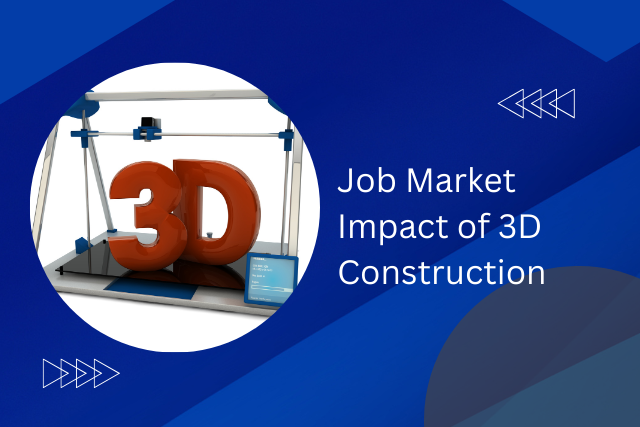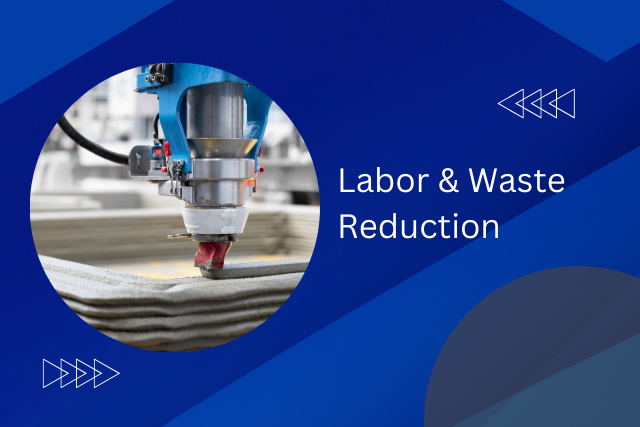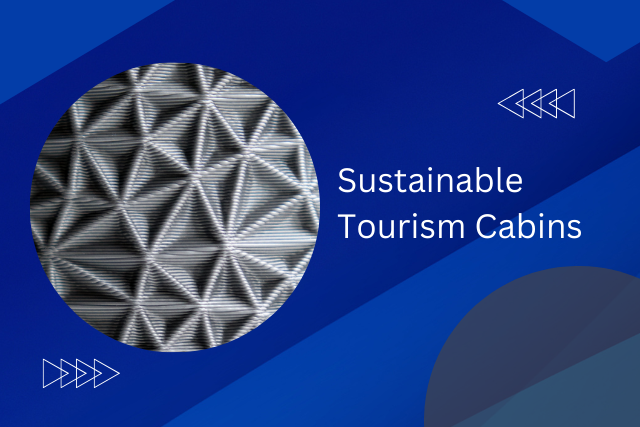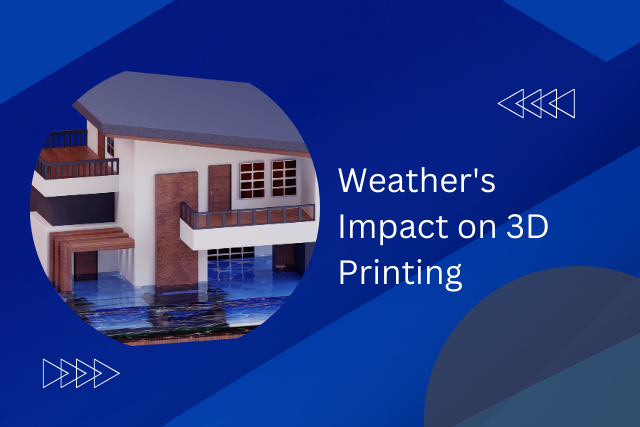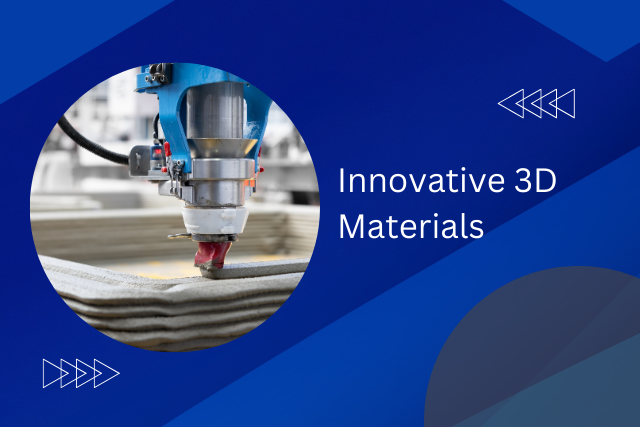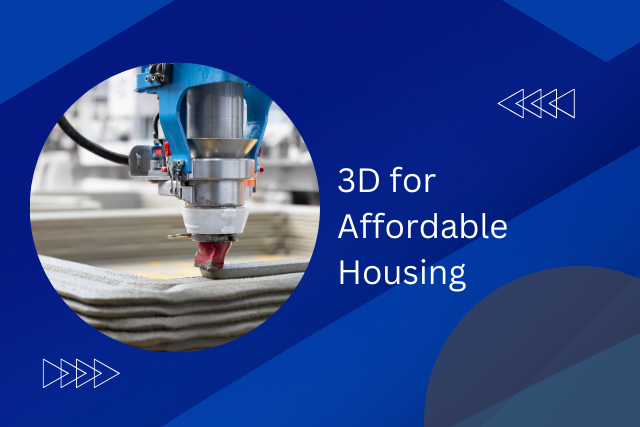In the world of building homes, we’re seeing some exciting changes. Now, we have 3D printed homes and prefab homes challenging the old way of building homes brick by brick, known as traditional construction. 3D printed homes are cool because they can create unique designs and waste less material, but since this technology is still new, people are unsure about how long these homes will last and if they follow all the building rules.
On the other hand, prefab homes are made in factories, which means they can be put together quickly and cost less, but some people think they’re not as good quality. Traditional building has been around for a long time, so people trust it to be strong and well-made, but it’s not the best for our planet and can be expensive.
When comparing these three ways of building homes, we’re really trying to figure out which one is the best for making our neighborhoods better.
Understanding 3D Printed Homes
3D printed homes are a new and exciting way to build houses that are better for the environment and can save money compared to old ways of building. This method uses additive manufacturing to create homes, changing how we think about making buildings. If you’re looking for unique designs in your home that are usually too costly or impossible with traditional methods, 3D printing in construction lets you have those designs.
These homes are made with special materials, like concrete and composite polymers, and can be built very quickly and accurately. The technology works by adding layers of material based on digital designs, making strong and energy-efficient buildings. This is very different from the slow and hard work needed for traditional construction, showing us a future where homes can be made faster, with less waste, and designed for what people really want.
Using 3D printing for building homes is not just about using new technology. It’s a way to think differently and challenge old methods.
Benefits of 3D Printing
Using 3D printing in building things like houses and bridges comes with many good points. It allows for making designs that are really unique and hard to make in any other way. This is because 3D printing can create complex shapes and parts that fit together perfectly without needing to cut or adjust them later, which means less waste.
Also, 3D printing can make these parts quickly, which helps build things faster. This is especially helpful when we need to build houses quickly after a disaster or when a new road or bridge is needed fast. The fact that 3D printers can use different kinds of materials, including some that are recycled or found nearby, helps make building more eco-friendly.
With 3D printing, builders and designers can be more creative and make buildings that are both good for the environment and built quickly. This is changing how we build, making it better for the planet and helping us use new ideas and technologies in our world.
Limitations of 3D Printed Homes
While 3D printed homes herald a revolution in construction, they are not without their limitations. Material diversity constraints significantly limit the scope of designs and finishes available, confining builders to a narrower palette of options. Furthermore, geographical availability challenges mean that this innovative technology is not accessible in all regions, restricting its adoption and impact on global housing solutions.
Material Diversity Constraints
The main problem with 3D printed homes is that they can only use a few types of materials. This issue makes it hard for architects and engineers to be fully creative and limits how much they can innovate. Unlike traditional and prefab homes, which can use many materials like wood, steel, glass, and composite polymers, 3D printed homes have a smaller choice. This lack of materials means that all 3D printed homes tend to look and feel the same, which isn’t great for architecture. This situation stops 3D printed homes from becoming a flexible and widely used option for housing.
Geographical Availability Challenges
One big challenge for making 3D printed homes more common is that they can’t be built everywhere. This is because the technology and materials needed are not available everywhere. This problem makes it hard for new and innovative types of houses to be built around the world and limits the choices people have when they want to build a home.
| Factor | 3D Printed Homes | Traditional Homes |
|---|---|---|
| Technological Access | Limited | Broad |
| Material Availability | Restricted | Wide |
| Geographic Reach | Narrow | Global |
This table shows clearly how 3D printed homes and traditional homes differ in where they can be built. It highlights the need for more technology and new materials in 3D printing to make it possible to build these homes everywhere. This way, everyone around the world can have more choices when it comes to their homes.
Exploring Prefab Homes
Prefab homes are great for people who want a quick, affordable, and smart way to build a house. These homes are made in big pieces in factories where conditions are always the same. This means building them is not only faster but also makes less waste.
The smart part of prefab homes is how they can change easily to fit what you want and use new, energy-saving materials and systems. Instead of depending on local workers who might not have all the skills needed, prefab homes are made by experts and precise machines. This makes sure the quality is good every time. This way of building gives people who want to own their home more control and choices, making it perfect for those who want something different and new.
For those who like to have their own unique home and not follow the usual way of building, prefab homes are more than just a place to live. They are a way to show that you value being independent and creative.
Advantages of Prefabrication
Prefabrication is a new way of building homes that is better in many ways compared to the old methods. It’s like putting together a big puzzle where most pieces are made in a factory. This way of building homes is faster, cheaper, and makes better-quality homes. It’s also better for the environment and lets people choose exactly how they want their homes to look.
| Advantage | Impact |
|---|---|
| Speed of Construction | Builds homes much faster than the old way. |
| Cost Efficiency | Saves money because making things in a factory costs less. |
| Quality Control | Homes are better because they’re made in a controlled setting, reducing mistakes. |
| Sustainability | It’s better for the planet because it makes less waste. |
| Flexibility | People can customize their homes to fit their needs and the land they’re building on. |
Prefabrication lets people pick a home that matches what they care about, whether that’s saving money, having a unique design, or helping the environment. It shows how new ideas can make building homes better, by making them more affordable, eco-friendly, and personalized.
Challenges With Prefab Construction
Prefab construction has many good points, but it also faces big challenges that can mess up project plans and costs. The main idea of prefab is to make parts in a factory and then take them to the building site. This process has a lot of tough steps that can cause problems, especially for people who love freedom. The distance problem is a big deal. The further the building site is from the factory, the more it costs to move things and the higher the chance that parts get broken on the way. This can make costs go up in ways that weren’t planned, which can make the benefits of using prefab less clear.
Also, making things with prefab needs a lot of careful work in the factory. If the parts don’t exactly match the building site, it can cause big delays and extra costs, because making changes on-site is harder and costs more than with traditional building methods. The use of technology and machines, which is usually a sign of progress, can also cause problems. If machines break down or there are issues with software, it can make the project take longer.
For people who support freedom and new ideas, dealing with these problems takes a lot of determination and a readiness to handle the complicated parts of modern building methods.
The Tradition of Building Homes
Building homes the traditional way is like keeping a piece of history alive. It’s very different from the modern, fast way of making houses with machines. In traditional building, every house is special because it’s made to fit the person who will live in it. This method uses materials that come from the local area and people do most of the work by hand. This is good for the local economy and helps people feel closer to where they live.
Traditional building is important because it makes sure that not all houses look the same. It lets homeowners and builders make something unique. Making a house this way needs a lot of skill. People have to know a lot about things like bricklaying and woodwork. Machines can’t do these jobs in the same special way, so every traditional house has its own personality.
Pros of Traditional Construction
Exploring the good sides of traditional building, we quickly see its special mix of beauty and strong making. Old-style homes, made with proven ways, bring a lasting and personal touch that newer methods can’t match. This way of building lets owners have a big say in their home’s look, making sure every house reflects the owner’s style and character.
| Feature | Benefit | Impact on Freedom |
|---|---|---|
| Customization | Designs that fit what you want | Lets you show your style |
| Durability | Made to last with strong materials and ways | Keeps homes in the family for a long time |
| Aesthetic Variety | Many styles and finishes to choose from | Lets you be creative |
| Local Craftsmanship | Uses skilled workers from the area | Helps the community stand on its own |
| Emotional Connection | Feels like it truly belongs to you and your place | Makes your identity stronger |
Traditional building likes customization, durability, and aesthetic variety, all supported by local craftsmanship. This not only helps the local economy but also tells a story of independence and who we are. It shows how clever humans can be and our wish to really connect with where we live. It gives homeowners a blank page to bring their dream homes to life, without being stuck with ready-made designs.
Cons of Conventional Homes
Traditional homes have a lot of beauty and can last a long time, but they also have big problems that make it hard to live in today’s world in a way that’s good for the planet. These homes are usually built in old-fashioned ways that use a lot of materials that are bad for the environment. For example, concrete and wood are common in these homes, but they’re bad because they create a lot of pollution and cut down too many trees.
Also, the way these homes are built doesn’t change much, which means if you want to update your home or add new technology, it can be very expensive and cause a lot of mess. This makes it hard for people who want their home to be more modern or to have special features just for them. It also means that the whole building industry isn’t moving forward as fast as it could toward being more green and meeting people’s needs better.
Today, people really value being able to choose and living in a way that doesn’t hurt the planet. But, traditional homes don’t fit well with these values. They feel out of date and not in line with what people want, which is to live in a way that’s flexible, doesn’t waste resources, and is in balance with nature.
Conclusion
The way we build houses is changing, thanks to new methods like 3D printing and prefabrication, alongside traditional building ways. Each method has its own benefits. 3D printed homes are great because they can be made to fit what each person wants and are better for the environment. Prefab homes are built quickly and can save money. Traditional building methods are known for being strong and reliable because they have been used for a long time.
But, there are also challenges. New technologies face problems with current rules and how people feel about these new ways of building. This means we need to understand these methods well and use them wisely in building future houses.

